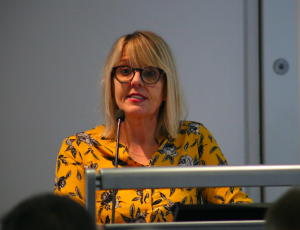Relief for some but dread for others as the reality of Technology’s location strategy hits home
BT February 24 2021
Wednesday 24th Febrauary 2021
More questions have been posed than answered about the future prospects of an as yet unquantifiable number of team member grade employees in BT Technology following the release of more details about the division’s Better Workplace Programme (BWP).
It’s now nearly a year since Technology became the first part of BT to give a broad brushstroke overview of its BWP site rationalisation intentions – revealing plans to consolidate more than 400 sites into just six ‘Strategic Hubs’ and a small number of ‘Specialist Buildings’ over a four year period. Until now there has been scant information regarding precisely what work will be located in each hub and the timescales involved – causing uncertainty and anxiety in equal measure.
Today (Wednesday), however, more clarity has finally been provided as to the functions that will be located in each of the six strategic hubs. Details as to which workstreams will be centred on the Belfast, Birmingham, Bristol, Ipswich, London and Manchester sites respectively are outlined in a management slide pack which can be viewed here.
Simultaneously, Technology has today confirmed that there will now be 13 ‘Specialist Buildings’ – with Alexander Bain House in Glasgow and Faraday House in London added to a list that had already previously been expanded from the seven originally announced. More information about the narrowly defined work areas to be conducted in each of the specialist buildings are provided in the management slide pack – but, in essence, those sites will only see a continuation of the specific functions currently conducted there rather than new work areas being introduced.
What’s missing from the information provided by management today, however, are the proposed timescales for the migration of different workstreams from a plethora of closing sites to the six main hubs – and management’s initial assessment as to the number of individuals whose work will be relocating to locations they cannot travel to.

Sally Bridge
CWU national officer for Technology, Sally Bridge explains: The CWU national team has already made it clear to Technology that, whilst today’s announcement may be good news for some – ending their uncertainty – it will at the same time crystalise for many that they are in the wrong place at the wrong time and that their future looks decidedly bleak.
“We’ve therefore called on Technology to give much greater consideration than has so far been the case to the use of remote and smart-working to assist those who are not within reasonable travel of one the Strategic Hubs.
“Without that further consideration it’s the view of the Technology national team that these proposals will undoubtedly lead to further compulsory redundancies, and it will be our aim to avoid these by all means possible.”
Bitter foretaste of future BWP challenges?
Urgent CWU demands for more clarity from Technology as to how the division intends to deal with those left stranded by itsBetter Workplace plans follow in the wake of stark warnings to BT’s top brass that they need to “get serious in negotiations or face industrial action” over multiple threats to job security and hard-won terms and conditions that are erupting across BT Group.
Kicking off the union’s third national Count Me In campaign ‘Day of Action’ just last week, CWU deputy general secretary Andy Kerr insisted that, unless management changes its current trajectory, the CWU will be forced to press the nuclear button in a matter of weeks. (See story here)
The Better Workplace Programme has not been the primary driver of the redundancies announced across BT Group, including Technology, to date – but that’s likely to change in the coming months as the programme ramps up.
The human cost of BT’s current approach was poignantly highlighted in a meeting with Technology yesterday (Tuesday) at which the union was briefed about what the company has announced to the workforce today.
Sally Bridge explains: ““The truth is that this going to be extremely worrying news for those who suddenly realise that they are nowhere near where their work is going to end up.”
“There’s no doubt that this group will include individuals who previously thought they were ‘safe’ on account of their proximity to one of the six pre-announced hubs, but who now find their work is heading somewhere else entirely.
“There could hardly be a timelier reminder as to why our Count Me In fightback is so important,” she concludes.


